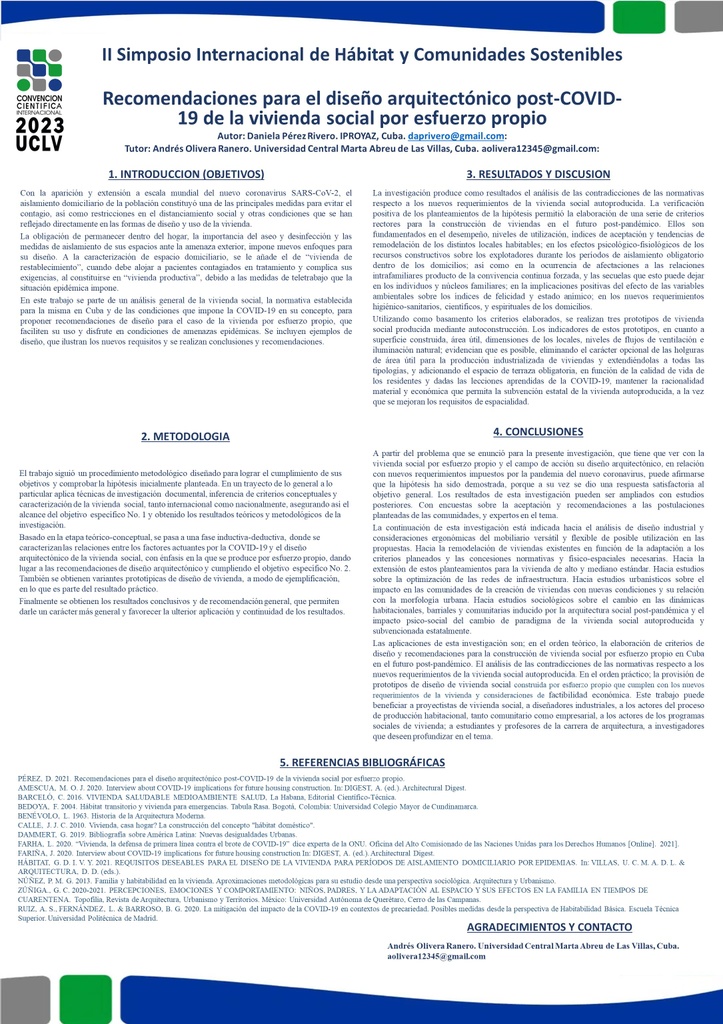Executive Secretary

2nd International Symposium on Habitat and Sustainable Communities
HAB-COM 2023

With the appearance and worldwide spread of the new SARS-CoV-2 coronavirus, home isolation of the population constituted one of the main measures to avoid contagion, as well as restrictions on social distancing and other conditions that have been directly reflected in the forms of design and use of the house.
The obligation to stay inside home, the importance of cleaning and disinfection and the isolation measures of its spaces from the outside threat, imposes new approaches to its design. To the character of "shelter housing" that the home space acquires, it is added that of "restoration housing", when it must house infected patients in treatment and complicates its demands, by becoming "productive housing", due to teleworking measures that the epidemic situation imposes.
This work begins with a general analysis of social housing and the conditions imposed by COVID-19 in its concept, to propose design recommendations for the case of self-made housing, that facilitate its use and enjoyment in conditions of epidemic threats.
Design examples are included to illustrate the new requirements, and conclusions and recommendations are made that build on the lessons of the current pandemic in the face of future similar health crises.
Con la aparición y extensión a escala mundial del nuevo coronavirus SARS-CoV-2, el aislamiento domiciliario de la población constituyó una de las principales medidas para evitar el contagio, así como restricciones en el distanciamiento social y otras condiciones que se han reflejado directamente en las formas de diseño y uso de la vivienda.
La obligación de permanecer dentro del hogar, la importancia del aseo y desinfección y las medidas de aislamiento de sus espacios ante la amenaza exterior, impone nuevos enfoques para su diseño. A la caracterización]de espacio domiciliario, se le añade el de “vivienda de restablecimiento”, cuando debe alojar a pacientes contagiados en tratamiento y complica sus exigencias, al constituirse en “vivienda productiva”, debido a las medidas de teletrabajo que la situación epidémica impone.
En este trabajo se parte de un análisis general de la vivienda social y de las condiciones que impone la COVID-19 en su concepto, para proponer recomendaciones de diseño para el caso de la vivienda por esfuerzo propio, que faciliten su uso y disfrute en condiciones de amenazas epidémicas.
Se incluyen ejemplos de diseño, que ilustran los nuevos requisitos y se realizan conclusiones y recomendaciones que aprovechan las enseñanzas que está dejando la actual pandemia de cara a futuras crisis sanitarias similares.
About The Speaker

Arq. Daniela Pérez Rivero

Discussion